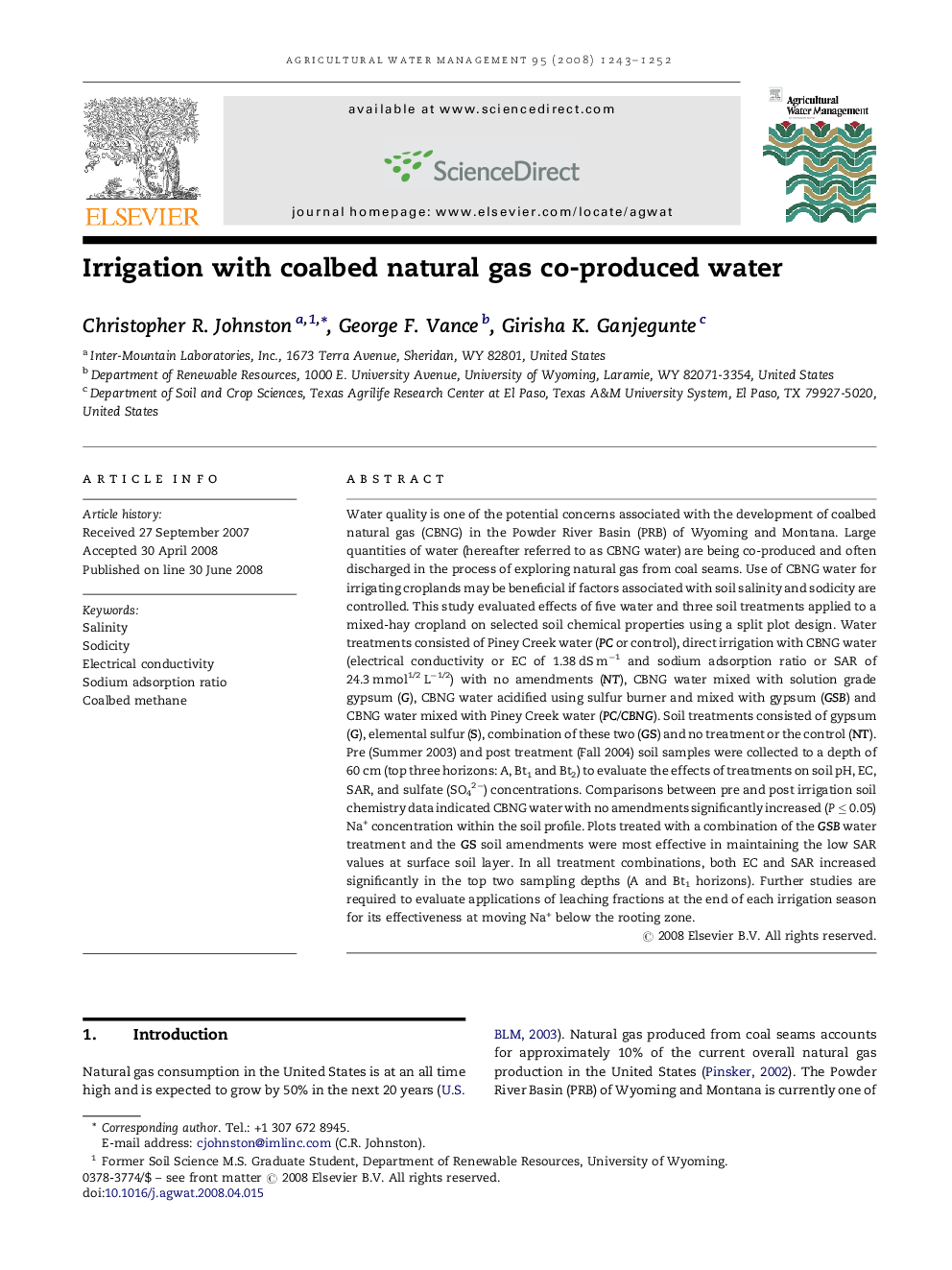| کد مقاله | کد نشریه | سال انتشار | مقاله انگلیسی | نسخه تمام متن |
|---|---|---|---|---|
| 4480172 | 1316477 | 2008 | 10 صفحه PDF | دانلود رایگان |

Water quality is one of the potential concerns associated with the development of coalbed natural gas (CBNG) in the Powder River Basin (PRB) of Wyoming and Montana. Large quantities of water (hereafter referred to as CBNG water) are being co-produced and often discharged in the process of exploring natural gas from coal seams. Use of CBNG water for irrigating croplands may be beneficial if factors associated with soil salinity and sodicity are controlled. This study evaluated effects of five water and three soil treatments applied to a mixed-hay cropland on selected soil chemical properties using a split plot design. Water treatments consisted of Piney Creek water (PC or control), direct irrigation with CBNG water (electrical conductivity or EC of 1.38 dS m−1 and sodium adsorption ratio or SAR of 24.3 mmol1/2 L−1/2) with no amendments (NT), CBNG water mixed with solution grade gypsum (G), CBNG water acidified using sulfur burner and mixed with gypsum (GSB) and CBNG water mixed with Piney Creek water (PC/CBNG). Soil treatments consisted of gypsum (G), elemental sulfur (S), combination of these two (GS) and no treatment or the control (NT). Pre (Summer 2003) and post treatment (Fall 2004) soil samples were collected to a depth of 60 cm (top three horizons: A, Bt1 and Bt2) to evaluate the effects of treatments on soil pH, EC, SAR, and sulfate (SO42−) concentrations. Comparisons between pre and post irrigation soil chemistry data indicated CBNG water with no amendments significantly increased (P ≤ 0.05) Na+ concentration within the soil profile. Plots treated with a combination of the GSB water treatment and the GS soil amendments were most effective in maintaining the low SAR values at surface soil layer. In all treatment combinations, both EC and SAR increased significantly in the top two sampling depths (A and Bt1 horizons). Further studies are required to evaluate applications of leaching fractions at the end of each irrigation season for its effectiveness at moving Na+ below the rooting zone.
Journal: Agricultural Water Management - Volume 95, Issue 11, November 2008, Pages 1243–1252